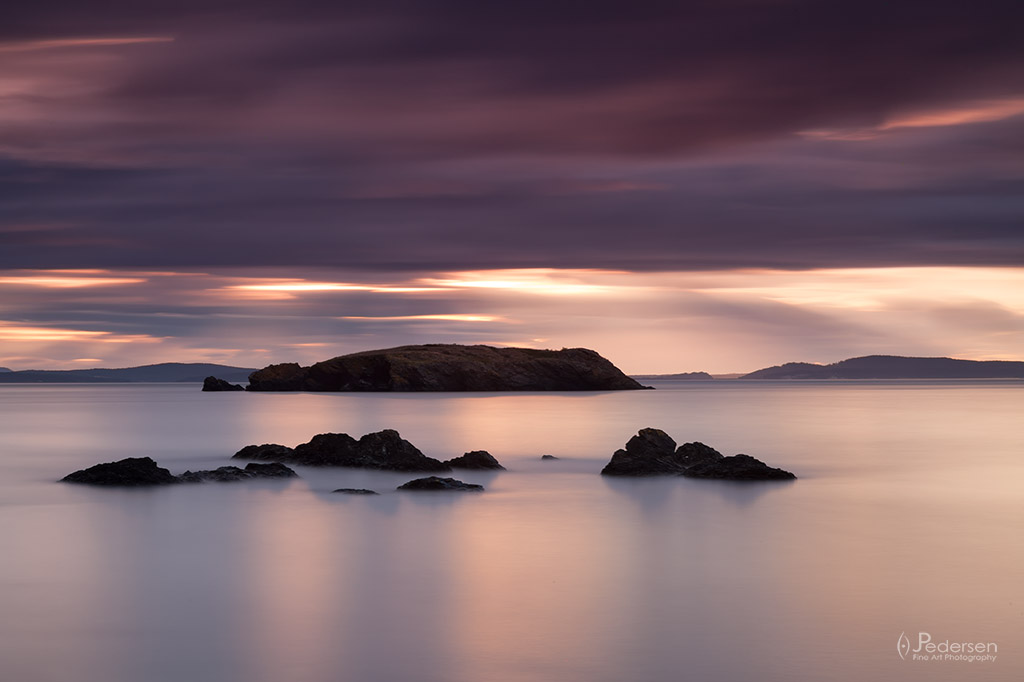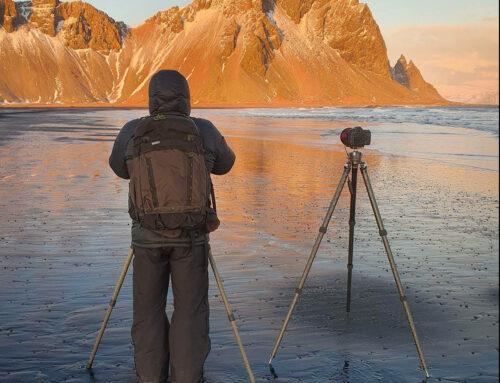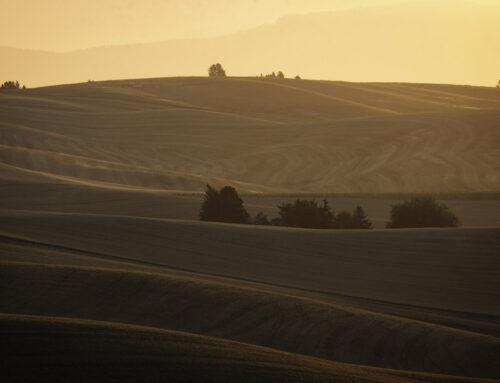With all the chatter about gear on the various forums and websites, there usually isn’t too much talk or comparison of tripods, which I think is a bit of a shame because they are, or can be, a very important part in capturing images. Every component in the signal path, from lens, filter, sensor, tripod, processing software, etc…they all play a vital role in image quality.
I do get asked a lot about tripods and what I recommend. I generally don’t recommend anything, however, I do relay my experiences and learnings with tripods and what I like and what works for me. My friend Bill Fortney says, “there are two kinds of tripods, those that are easy to carry and good ones”. Meaning, the purpose of a tripod is to provide a stable platform and not perpetuate any vibrations or shake which would degrade the image quality, and these types of tripods are thus heavy and sometimes un-weildly.
I’ve owned at least 6 tripods on my photographic journey so far, each one more robust and more expensive. When starting out I bought what I thought was a nice one and wasn’t too expensive. But with use, I soon found flaws in the design and decided to upgrade. This cycle went on through multiple combinations until I got to the point I’ve been at for the past 4 years, using a Gitzo Carbon Fiber #3541 tripod, with RRS BH-55 bullhead and RRS leveling base (for panos). This is a super stable package that is easy to use day in and day out on long photo trips. It is heavy though, which I don’t mind because I’m still a firm believer in using tripods.
Do I even need to use a tripod?
These days, it’s becoming a much more viable option to not even use a tripod due to the incredible high ISO capability of modern cameras and the image quality you get at higher ISOs. I know several working professionals who have ditched their tripod with no regrets.
I still am a proponent of using tripods (despite the weight and sometimes hassle factor) because of several benefits I get from using one.
- I can shoot at the lowest possible ISO to maximize my image quality in camera without worrying about motion blur of handholding or raising ISO
- Using a tripod enables me to SLOW DOWN when I’m on location and get in tune with my surroundings and hopefully make better images because I’m more thoughtful and not in a rush
- Utilize slower shutter speeds. Period. If you want to blur the water, or capture motion blur of the clouds, you need to have a stable platform and have longer shutter speeds.
- My compositions are much better at the time of image capture. With my camera on a tripod, I can carefully look through the viewfinder and examine all parts of the composition and fine tune it to get exactly what I want. I also allows me to look for distracting elements that I might not see if I was shooting handheld (and more quickly)
There are some downsides to be aware of using a tripod.
- One of the biggest pitfalls of tripod use is when you arrive at a location, extend your tripod legs and put it down, you have essentially ‘fixed” your location and won’t move around as easily. I see people do it all the time, I still do it on occasion. That is why when I show up to a location, I am very thoughtful to NOT pull out my tripod for at least 5 minutes. I walk around the area I’d like to shoot, scoping out different compositional ideas. It’s only when I think I have found some good comps and angles that I get out my tripod and set it down. I also do work to move around and reposition my tripod as often as I can. It’s amazing how even moving just 5″ in one direction can produce an dramatically different image.
- Many folks I talk to complain what a hassle tripods are to work with in the field. “If you move, you have to adjust the legs, adjust the ball head, re-level everything….it’s just too much work!” (see point #1) It’s been my experience with these folks that they tripod they are using is not one that is easy to work with and I can totally understand why they complain about adjusting it. Many tripods are a pain in the butt! If you have a good tripod that is easy to use (for you) then moving the tripod shouldn’t be a pain and you can move freely to get the comp just right.
- Tripods can be heavy and/or an additional complication when traveling. Yup! But my view that if the image is worth it, the weight or hassle is worth it.
So what is a good tripod?
That’s a tough question and it really depends on what you’re looking for and how much you have to spend! There are hundreds 9if not thousands) of choices in tripod/ball head on the market today. Much more than I could possible try and review. The key differences between everything on the market comes down to a few basic things..
- Materials
- Build Quality
- Features
Materials
The big choice here is carbon fiber versus aluminum. Carbon Fiber is usually lighter, doesn’t corrode in salt water, very strong and most importantly, does a fantastic job of damping vibrations. Carbon fiber is generally more expensive than aluminum. Aluminum is heavier than CF, but not by much, if protected by a good finish will not corrode, does an ok job of damping vibrations and best of all is cheaper than CF.
Build Quality
Now this is where things start to get a bit more subjective. The more expensive tripods don’t necessarily mean they are better built, but in many cases that proves to be true. Things to look at: The finish on all of the parts, how the legs are assembled and put in to the top plate, how beefy are any screws or fastening hardware, etc. These are all things to evaluate. One criteria that is important to me is how easy it is to service/clean the tripod. Since I shoot at the ocean quite frequently, my tripod is subjected to the waves and sand, resulting in the tripod legs getting a fair amount of sand in them. I routinely take my tripod apart to clean and lubricate the parts to give it as long a life as possible.
Features
Now this is where it’s completely subjective. What features I value might not be features that you value. A lot depends on how often you’ll be using the tripod, what kind of shooting you like to do (landscape versus birding), what environments will you typically be in, etc. It really is up to you what features you want.
The one area that I will share one of my preferences that I developed after much trial and error, is the mechanism to adjust the legs. There are two basic styles of adjustment/holding the legs: Twist-Lock and Flip-Lock. With twist lock, you twist the collar to loosen or tighten the leg. With flip lock, there is a lever which opens/closes to loosen or tighten the legs.
Twist Lock Flip Lock
What I have found over the years is that I MUCH prefer twist lock leg adjustment over flip locks. With the twist, it’s a more natural fluid movement which allows easier adjustments and less fatigue while using. It also is a gradual loosening/tightening so I can slowly or quickly extend or collapse the legs. I’ve found that most twist locks also are fairly resistant to sand, dirt, snow, rain and they keep on working as designed. My first tripods were flip locks as they seemed more secure to my inexperienced mind. In practical use for me, I grew tired of them very quickly. With cold fingers trying to undo the lever, or getting them clogged with sand so they wouldn’t close properly and needed adjustment to get them to close, or when you open the flip lock and the leg is fully released and shoots out to its full length wine I just wanted a couple inches of height. Again, this is just my opinion, but for my money, I wouldn’t have anything other than twist locks on my tripod.
Pitfalls to be wary of
There is only one pitfall I will mention here because like everything else, this is my opinion and only one thing really stands out to me regarding tripods……and that is a CENTER COLUMN. Many tripods come with a center column as a “feature” to help you get extra height, or to extend out to the side when you can’t place the tripod where you really need to. My beef with center columns is that when you use them, you are turning your 3 legged, stable platform in to essentially a monopod which has limited stability and vibration control. Imagine being at the beach with a 200mm lens with the wind blowing 25mph and you have your camera mounted on the center column that is raised to it’s full height. That camera will be swinging in the wind on the end of that post resulting in less than optimal images! If your tripod has a center column, don’t use it. Or, take it off the tripod if you can and save some weight (and remove temptation) 🙂
Much more can be written about tripods, I just wanted to share a few of my thoughts on the topic. In my opinion they are an essential piece of the image capture ecosystem and one that you should give as much consideration to as you do your camera and lenses.







Leave A Comment